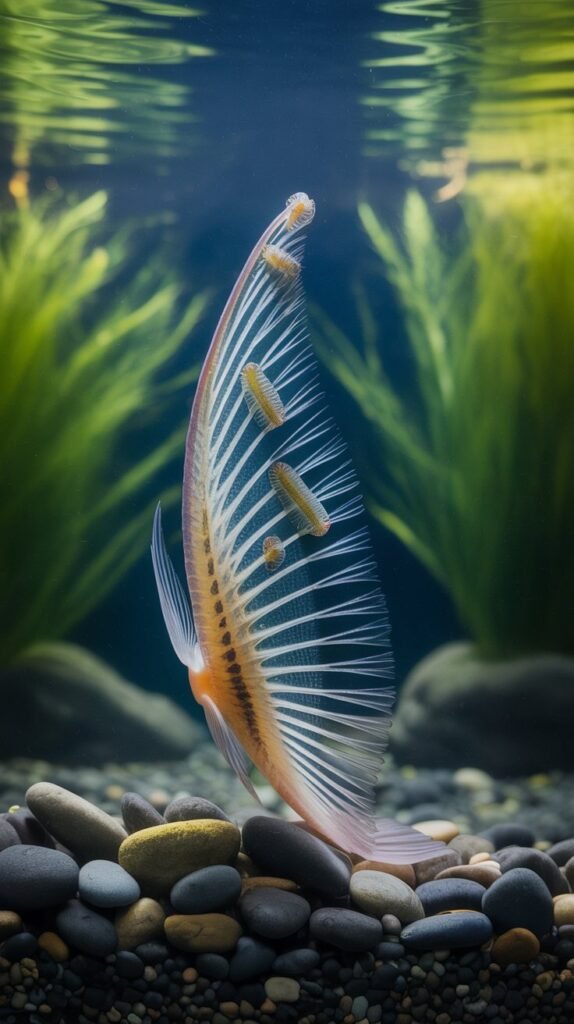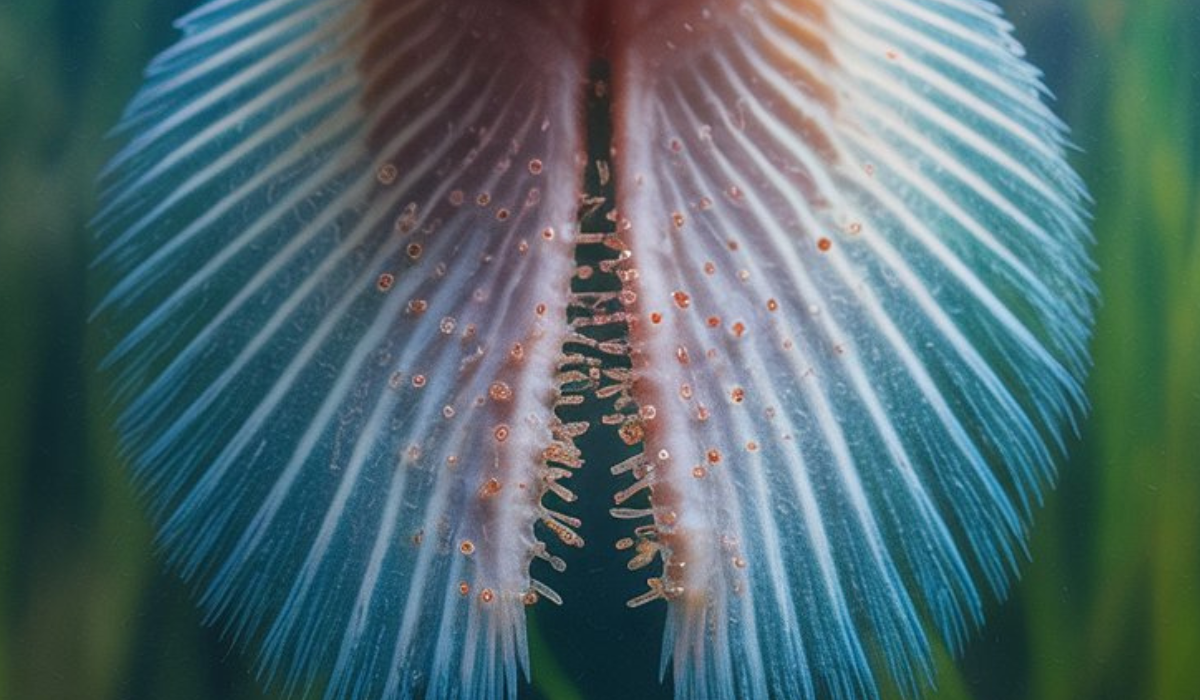Fishkeeping is an exciting and rewarding hobby, but it comes with challenges. One of the most common parasitic infections that affect aquarium fish is gill flukes. These tiny parasitic flatworms attach to the gills of fish, causing severe discomfort, breathing issues, and, if left untreated, even death. Detecting gill flukes symptoms early is critical to save your fish and maintain a healthy aquarium environment.
This comprehensive guide explores the symptoms, causes, diagnosis, and prevention strategies for gill flukes in fish.
What Are Gill Flukes?
Gill flukes are microscopic monogenean trematodes (flatworms) that infest the gills of freshwater and marine fish. The most common genera include Dactylogyrus (gill flukes) and Gyrodactylus (skin flukes). These parasites attach to the delicate gill tissues, feeding on mucus, blood, and epithelial cells.
The infestation leads to irritation, excessive mucus production, and difficulty breathing. Unlike some parasites that require intermediate hosts, gill flukes can reproduce directly on fish, making them highly contagious in aquariums and ponds.
Life Cycle of Gill Flukes
Understanding the life cycle of gill flukes helps in identifying symptoms and implementing treatment.
- Egg Stage (for Dactylogyrus): Some gill flukes lay eggs on aquarium surfaces, decorations, and substrate. These hatch into larvae.
- Larvae (Oncomiracidia): Free-swimming larvae search for fish gills to attach to.
- Adult Stage: Once attached, they grow into adults, feed on gill tissue, and continue the cycle.
Because of this direct life cycle, infestations can spread rapidly, especially in crowded aquariums or ponds.
Causes of Gill Fluke Infestations

Gill flukes thrive in certain conditions, often linked to poor aquarium management. Common causes include:
- Overcrowded tanks: High fish density increases parasite spread.
- Poor water quality: Ammonia, nitrite, and high organic waste make fish more susceptible.
- Introducing infected fish/plants: New fish or plants may carry parasite eggs or larvae.
- Stress factors: Sudden temperature changes, aggression, or poor diet weaken immunity.
- Wild-caught fish: Fish from ponds, rivers, or unquarantined suppliers are more prone.
Gill Flukes Symptoms in Fish
Recognizing gill flukes symptoms early is essential for saving your fish. These symptoms may appear mild at first but worsen as the infestation progresses.
1. Labored or Rapid Breathing
- Fish breathe faster or gasp at the surface due to reduced oxygen absorption.
- Gills appear inflamed or produce excessive mucus.
2. Gills Held Open
- Fish often keep one or both gill covers open.
- This occurs because parasites obstruct gill function, making normal breathing difficult.
3. Rubbing or Flashing
- Infected fish rub against rocks, plants, or decorations.
- This is a response to irritation caused by flukes in the gills.
4. Clamped Fins and Lethargy
- Fish become less active and may rest at the bottom.
- Clamped fins indicate stress and discomfort.
5. Loss of Appetite
- As breathing becomes difficult, fish eat less or stop eating entirely.
- Weakness follows prolonged loss of appetite.
6. Excess Mucus on Gills
- The gill surface becomes covered in a white or grayish mucus.
- This is the fish’s defense response to parasites.
7. Gills Appear Pale or Bloody
- Severe infestations lead to gill tissue damage.
- Gills may look pale due to oxygen deprivation or red due to hemorrhaging.
8. Swimming Near the Surface or Water Outlets
- Fish try to stay near oxygen-rich areas like filters or air stones.
- This behavior indicates respiratory distress.
9. Sudden Fish Deaths
- In extreme cases, fish die suddenly without obvious external wounds.
- This usually occurs when gills are too damaged to function.
Diagnosing Gill Flukes
Identifying gill flukes requires careful observation and sometimes microscopic examination.
Methods of Diagnosis:
- Visual Symptoms: Check for labored breathing, gill mucus, and lethargy.
- Gill Biopsy: A small sample of gill tissue examined under a microscope reveals parasites.
- Behavioral Observation: Flashing, gasping, and clamped fins often point to gill issues.
- Water Testing: Poor water quality may worsen symptoms, though it is not the direct cause.
Difference Between Gill Flukes and Other Diseases
Gill flukes can be mistaken for other fish diseases. Knowing the differences helps in treatment:
- Ich (White Spot Disease): Ich shows white cysts on the skin, while gill flukes affect gills primarily.
- Velvet Disease: Velvet gives a golden dust appearance, whereas flukes don’t cause visible skin coating.
- Ammonia Poisoning: Both cause rapid breathing, but ammonia issues are linked to poor water parameters.
How to Prevent Gill Flukes
Prevention is easier than treatment. Here are key steps:
- Quarantine New Fish: Always isolate new arrivals for 2–4 weeks.
- Maintain Water Quality: Perform regular water changes, test parameters, and clean filters.
- Avoid Overcrowding: Provide adequate space to reduce stress and parasite spread.
- Good Nutrition: Feed a balanced diet to strengthen immunity.
- Regular Observation: Watch for early signs of disease.
Treating Gill Flukes After Symptoms Appear
Once symptoms are noticed, immediate treatment is necessary.
Common Treatments:
- Praziquantel: A safe and effective anti-parasitic medication.
- Formalin Baths: Used under strict guidance to kill parasites.
- Salt Treatment: Adding aquarium salt helps reduce stress and parasites.
- Copper-Based Medications (for marine fish): Effective but must be carefully dosed.
- Improving Oxygen Levels: Increase aeration to support fish breathing.
Long-Term Impact of Gill Flukes
If untreated, gill flukes cause:
- Permanent gill damage
- Reduced immunity
- Chronic stress and stunted growth
- Secondary infections (fungal or bacterial)
Step-by-Step Action Plan for Fishkeepers
- Observe your fish daily.
- Quarantine new arrivals.
- If symptoms appear, confirm through visual or microscopic diagnosis.
- Begin treatment immediately.
- Improve tank conditions alongside medication.
- Monitor recovery and continue prevention practices.
FAQs on Gill Flukes Symptoms
Q1: How do I know if my fish has gill flukes or just poor water quality?
A: Poor water quality causes breathing issues too, but gill flukes usually cause mucus on gills, flashing, and gills held open. Test water to rule out ammonia or nitrite issues.
Q2: Can gill flukes spread to all fish in the tank?
A: Yes, they are highly contagious and can infest the entire tank population quickly.
Q3: Are gill flukes visible to the naked eye?
A: No, they are microscopic and usually require a microscope to confirm.
Q4: How fast do gill fluke symptoms appear?
A: Symptoms can develop within days, especially in stressed or overcrowded tanks.
Q5: Can gill flukes kill fish?
A: Yes, severe infestations damage gill tissue, reduce oxygen intake, and may lead to death.
Q6: What is the best treatment for gill flukes?
A: Praziquantel is the most widely recommended and safe treatment.
Q7: Do gill flukes affect both freshwater and saltwater fish?
A: Yes, but species differ. Freshwater fish usually suffer from Dactylogyrus, while marine fish may get related flukes.
Q8: How do I prevent recurring gill fluke infestations?
A: Quarantine, proper water maintenance, balanced diet, and periodic tank monitoring help avoid re-infestation.
Conclusion
Recognizing gill flukes symptoms early is the key to saving fish and preventing major losses in an aquarium. Symptoms like labored breathing, gills held open, excessive mucus, and lethargy should never be ignored. With prompt treatment and preventive care, you can protect your fish and maintain a thriving, disease-free aquarium.

